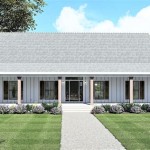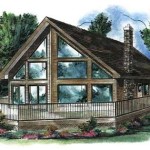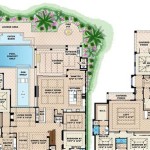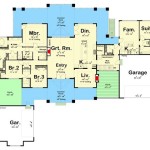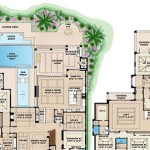Two-Story House Plans for Small Lots: Maximizing Space and Style
The increasing urbanization and rising cost of land have made small-lot living a prevalent reality in many areas. Building a two-story home on a small lot presents unique design challenges but also offers opportunities to maximize living space, create privacy, and even incorporate desirable architectural features. Careful planning and selection of appropriate house plans are crucial to achieving comfortable and functional living in a compact setting. This article explores key considerations for two-story house plans designed specifically for smaller lots, focusing on optimizing space utilization, architectural design styles, and practical construction aspects.
Understanding the Constraints and Opportunities of Small Lots
The term "small lot" is relative and dependent on local zoning regulations and property values. Generally, a small lot can be considered anything less than the average lot size in a given area, often ranging from 3,000 to 5,000 square feet. These lots typically have limited setbacks, meaning the distance between the house and the property lines is restricted. This restriction impacts the overall footprint of the house and necessitates vertical development to gain sufficient living space.
Despite the spatial limitations, small lots offer distinct advantages. They often require less landscaping and maintenance, leading to lower upkeep costs. They can also foster a sense of community due to their proximity to neighbors. Furthermore, innovative architectural designs can transform a small lot into a unique and stylish living environment.
Before selecting a house plan, a thorough understanding of local zoning ordinances is essential. These ordinances dictate permissible building heights, setbacks, lot coverage, and any specific architectural restrictions that may apply. Engaging with local planning authorities early in the process can prevent costly design revisions later.
Key Design Considerations for Two-Story Homes on Small Lots
Designing a two-story home for a small lot requires a strategic approach to space utilization. The goal is to create a comfortable and functional living environment without making the house feel cramped or overwhelming.
Vertical Space Maximization: The fundamental principle is to leverage vertical space effectively. Two-story designs inherently double the potential floor area compared to single-story homes on the same lot. By thoughtfully designing the layout and incorporating features like vaulted ceilings or open staircases, the feeling of spaciousness can be enhanced. Careful consideration should be given to ceiling heights on both floors. Higher ceilings on the ground floor can improve the sense of openness, while standard heights are often suitable for the upper floor, especially bedrooms.
Open Floor Plans: Open floor plans, where the living room, dining area, and kitchen flow seamlessly into one another, are particularly well-suited for small homes. This design eliminates the need for interior walls, creating a larger and more airy living space. Strategic placement of furniture and area rugs can define distinct zones within the open plan without sacrificing the overall spaciousness. Additionally, incorporating large windows and sliding glass doors can connect the interior with the exterior, further expanding the perceived living area and blurring the lines between indoors and outdoors.
Strategic Storage Solutions: Storage space is often at a premium in small homes. Integrated storage solutions are crucial. Built-in shelving, under-stair storage, and multi-functional furniture can maximize storage capacity without taking up valuable floor space. Wall-mounted cabinets and floating shelves can also provide additional storage without making the room feel cluttered. Consider the placement of closets and cabinets carefully to minimize their impact on the overall flow of the house. Utilizing attic space or building a small shed in the backyard can also provide additional storage options.
Layout and Circulation: The layout of the house is crucial for ensuring efficient circulation and minimizing wasted space. Well-placed hallways and staircases can significantly impact the flow of the house. Straight staircases are generally more space-efficient than curved or spiral staircases. Placing the staircase along an exterior wall can also help to maximize usable floor space. The arrangement of rooms should be logical and intuitive, with clear pathways between different areas of the house. Minimizing hallways and dead space is essential in small-lot designs.
Outdoor Living Spaces: Extending the living space outdoors can make a small home feel larger and more inviting. Decks, patios, and balconies can provide valuable outdoor living areas for relaxation, dining, and entertaining. Consider incorporating features like pergolas or trellises to create shade and privacy. Vertical gardening can also add greenery and visual interest to a small backyard. Integrating the outdoor space seamlessly with the interior through large windows and sliding doors can further enhance the connection between the two areas.
Architectural Styles and Their Suitability for Small Lots
Various architectural styles can be adapted for two-story homes on small lots, each with its own unique aesthetic and practical considerations.
Modern/Contemporary: Characterized by clean lines, minimalist detailing, and large windows, modern and contemporary styles are well-suited for small lots. Their emphasis on simplicity and functionality can help to maximize space utilization and create a streamlined aesthetic. Flat roofs, common in modern designs, can also offer opportunities for rooftop gardens or terraces. The use of sustainable materials and energy-efficient technologies is often a key feature of modern homes.
Craftsman: While traditionally associated with larger homes, Craftsman style can be adapted for smaller lots by scaling down the details and simplifying the rooflines. Features like exposed rafter tails, tapered columns, and a front porch can be incorporated while maintaining a compact footprint. The use of natural materials, such as wood and stone, adds warmth and character to the design. Consider a simplified gable roof to reduce the overall height and visual impact on the neighboring properties.
Farmhouse: Farmhouse style offers a charming and inviting aesthetic, even on smaller lots. White siding, a pitched roof, and a front porch are hallmark features of this style. Vertical siding can visually elongate the house, making it appear taller. Incorporating elements like a small vegetable garden or a chicken coop can add to the farmhouse charm. Large windows and a simple, functional layout contribute to the overall appeal.
Traditional: Traditional styles, such as Colonial or Victorian, can be adapted for small lots by simplifying the ornamentation and focusing on the basic architectural elements. A symmetrical facade, a central entrance, and a gabled roof are common features. Careful attention to window placement and proportions is essential to maintain the traditional aesthetic. Reducing the overall size of the house and simplifying the roofline can help to make it more suitable for a smaller lot.
Narrow Lot Designs: Specific designs catered toward narrow lots are particularly adept at maximizing space. These often feature a long, rectangular layout, with rooms arranged linearly along the length of the house. The efficient use of space is a primary consideration, and features like stacked closets and compact bathrooms are common. Large windows and skylights are often used to bring natural light into the interior spaces. These plans often emphasize a strong vertical element, making use of the height restriction to optimize the living area.
Practical Construction Considerations for Small Lots
Building on a small lot presents unique construction challenges that require careful planning and coordination.
Access and Staging: Limited space for construction equipment and material storage is a major consideration. Careful planning is required for the delivery and staging of materials. Coordination with neighbors is essential to minimize disruption and ensure that access to adjacent properties is not blocked. A detailed site plan should be developed to identify access routes, storage areas, and staging zones.
Setbacks and Easements: Strict adherence to setback requirements is crucial to avoid legal issues and ensure compliance with local zoning ordinances. The building permit process will carefully scrutinize the placement of the house on the lot. It is also important to be aware of any easements that may exist on the property, such as utility easements or access easements. These easements may restrict the placement of structures or landscaping.
Foundation Design: The foundation design must be carefully engineered to ensure the stability and durability of the house. Soil conditions and groundwater levels should be thoroughly investigated before construction begins. A slab-on-grade foundation is often the most cost-effective option for small lots, but a crawl space or basement may be necessary in some cases. The foundation design should also take into account the potential for future expansion or renovation.
Neighbor Relations: Maintaining good relations with neighbors is essential throughout the construction process. Communicating openly about the project schedule and any potential disruptions can help to minimize conflicts. Addressing any concerns or complaints promptly and fairly can help to maintain a positive relationship with the neighbors. Consideration should be given to noise levels, dust control, and traffic management during construction.
Drainage and Stormwater Management: Proper drainage and stormwater management are crucial to prevent water damage to the house and surrounding properties. The site should be graded to promote proper runoff, and drainage systems should be installed to collect and divert stormwater. Permeable paving materials can be used to reduce runoff and allow water to infiltrate into the ground. Detention basins or rain gardens can also be used to manage stormwater runoff.

2 Story House Plans For Narrow Lots Blog Builderhouseplans Com

2 Story House Plans For Narrow Lots Blog Builderhouseplans Com

Narrow Lot Two Y House Plan With 4 Bedrooms Cool Concepts Plans Modern Floor

Plan 051h 0211 The House

Adorable Two Story House Plan For Narrow Lot 31566gf Architectural Designs Plans

Simple Narrow Lot House Plans Houseplans Blog Com

Narrow Lot Two Y House Plan With 4 Bedrooms Cool Concepts Plans Architectural

2 Story House Plans For Narrow Lots Blog Builderhouseplans Com

2 Story Narrow Lot House Plans Under 40 Feet Drummond

Cool House Plans Offers A Unique Variety Of Professionally Designed Home With Floor By Narrow Lot Mini

